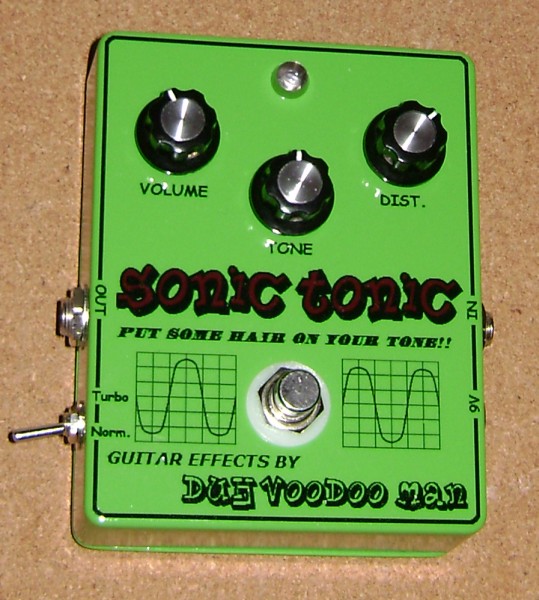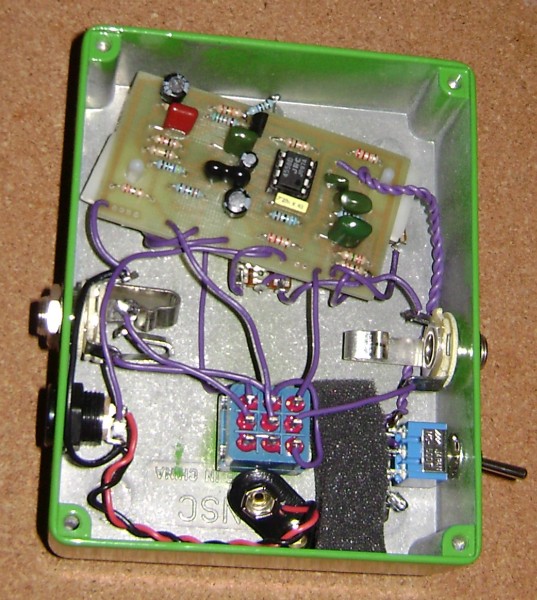This pedal is a slightly modified clone of the Maxon SD-9 "Sonic Distortion" effect, a highly regarded overdrive/distortion effect. While I couldn't locate a clone kit for this pedal, General Guitar Gadgets sells a PCB and gives comprehensive build documents (build instructions, layout, schematic) on their site. I was asked by a good friend if I could build one of these units for him, since he had trialed the "real thing" and was impressed with the pedal's broad range of overdrive and distortion sounds and very responsive tone control. While I had never played through one myself, I'd been favorably impressed by what I'd heard in Robert Renman's video demo of the SD-9 on his Dolphinstreet.com website.
The SD-9 circuit itself is quite straightforward, reminiscent of the Ibanez TS pedals, but with the clipping stage located on the opamp's output and dumping the clipped off signal to ground, rather than being located in the opamp feedback loop, like the Tube Screamers. This clipping method makes for considerably greater maximum distortion, but can still be dialed down to a moderate overdrive level. The pedal also has a more sophisticated tone stack than most distortion pedals, with parallel high and low pass filters wired to a single pot, allowing control of treble and bass directly. This gives a noticeably greater range of tonal control vs. the high-cut filter used in most distortion effects, where only the treble component is rolled on and off.
Another nice feature about this pedal is that, for a distro box with plenty of gain (+42 dB, from what I've read), it's impressively quiet. It's not nearly as noisy as some of the multiple transistor gain stage pedals I've built. I assume this is a benefit of using an opamp for the pedal's gain; this one was built with the venerable JRC4558D of Tube Screamer TS-808 fame, but any similar dual-stage opamp should work.
I added one feature to the stock pedal configuration, namely taking the pair of silicon clipping diodes off the PCB and soldering them to one end of a DPDT switch, with a pair of 3mm red LED's at the other end. This gives "normal" and "turbo" clipping options available at the flip of a switch. You can see the toggle switch at the lower right of the pedal's "gut shot" below.
One additional change was made after the fact, when the pedal's new owner found that the tone was bassier than he liked. Reducing the rating of a capacitor in a high-pass filter in the opamp feedback loop cleaned up the pedal's boominess immediately.
 |
 |
 |
Take a look at Duh Voodoo Man's Guitars & Amps |
 |
Go to Duh Voodoo Man's Home Page |
 |
Just close this browser window, please... |